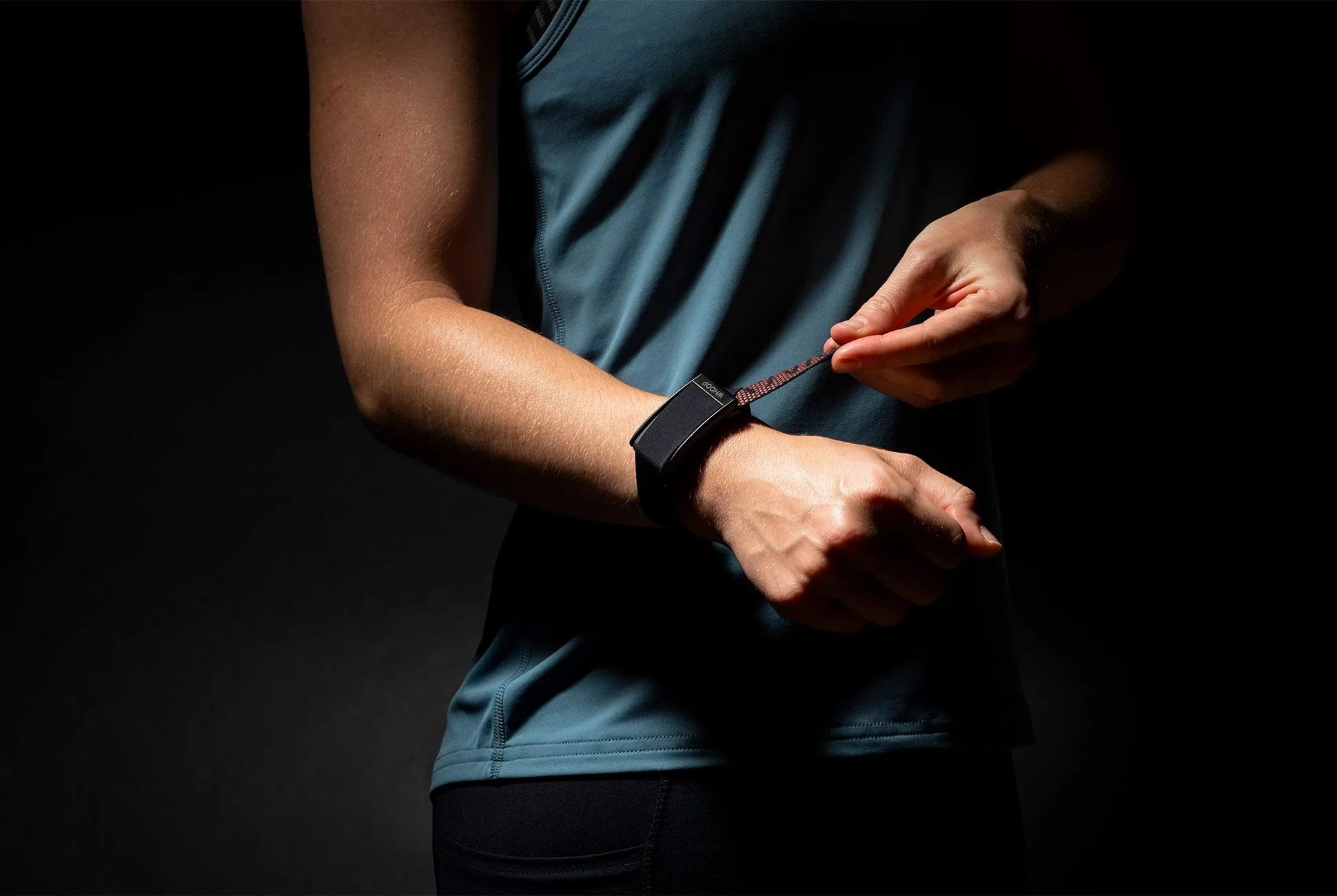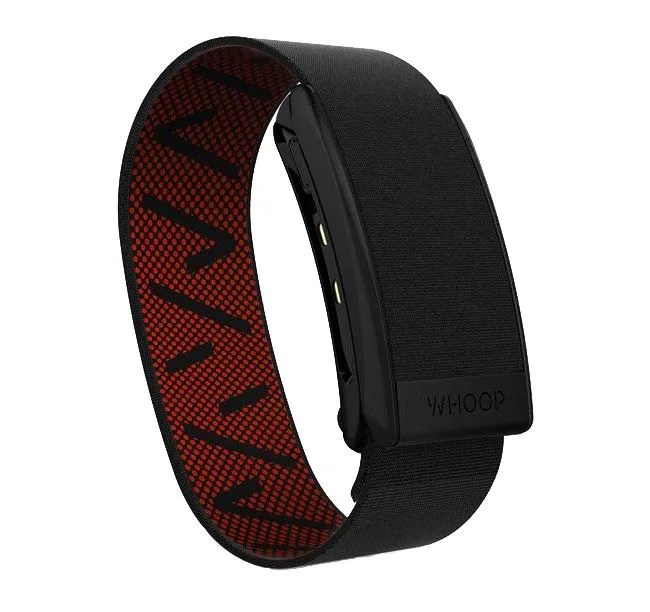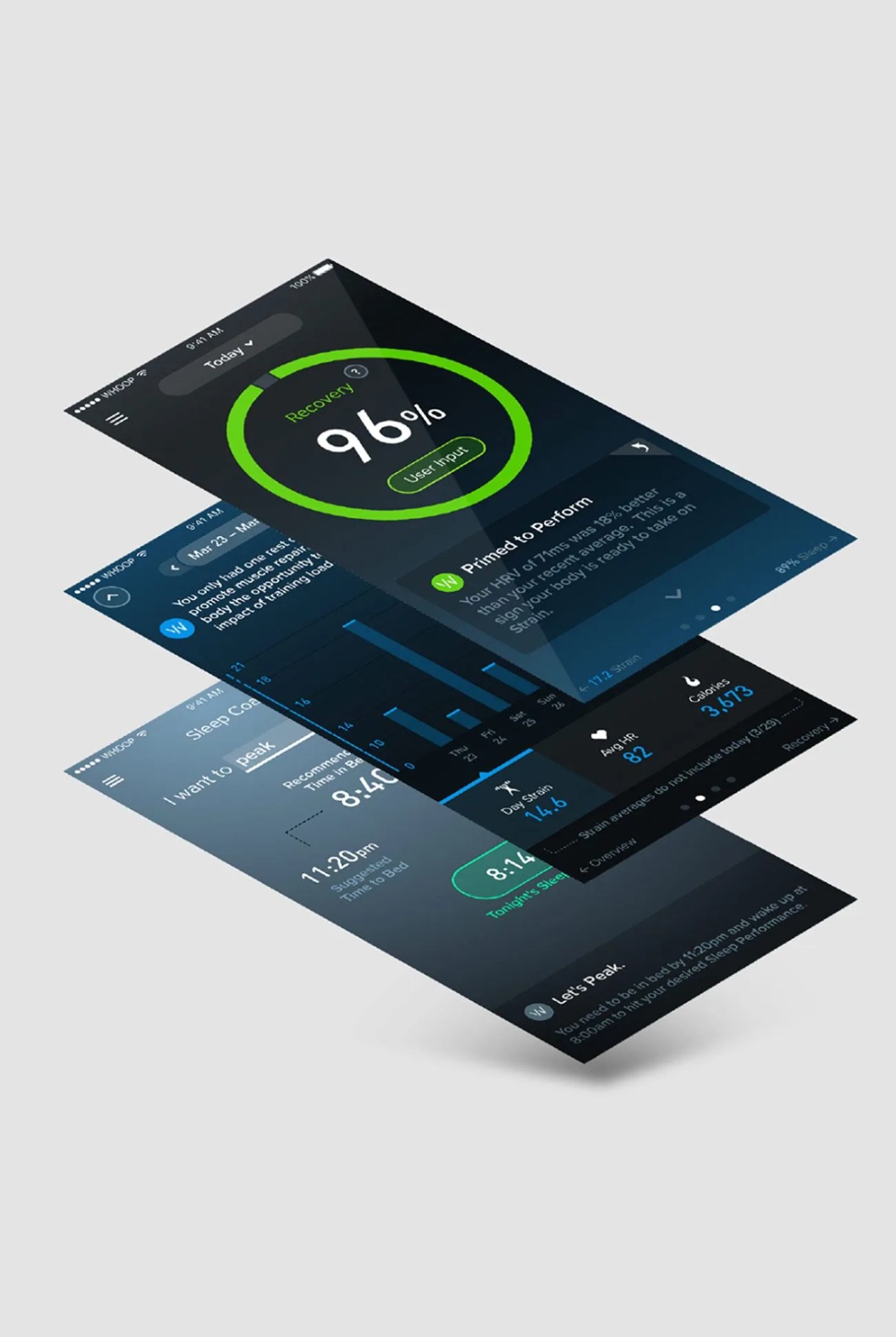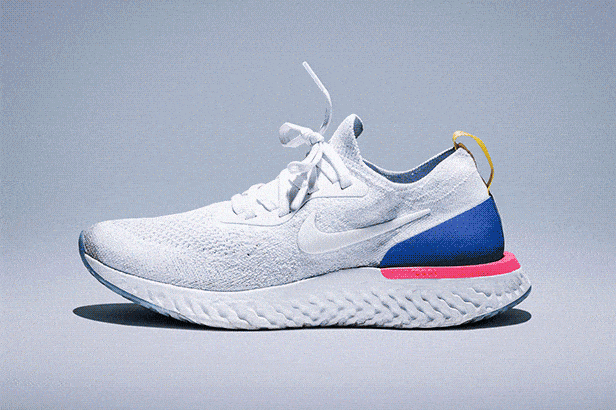The Whoop Strap 2.0 is a high-tech fitness tracker worn 24/7 that looks at everything from heart rate variability to sleep. The all-black device, worn on your wrist, is no larger than a set of matches. Athletes like Michael Phelps, Mike Mancias and Lawson Craddock all use it. Whoop is approved for use in the MLB and as a recovery tool for the NFL — even the Navy SEALS use it. Because of the high price point (think $500 for the device alone or $1,000 to $2,000 per player on professional and collegiate teams), the device was only available to elite athletes. In May 2018, Whoop changed to a subscription model, charging $30 a month, and became accessible to the masses. I wore Whoop Strap 2.0 for over a month to test out the accuracy, ease of use and to see if it would change the way I work out.
The Good: The Whoop Strap 2.0 logs your movements 24/7, collecting data 100 times a second. Average heart rate, calories burned and your daily activity provide cues for what the device calls ‘day strain,’ while heart rate variability and resting heart rate change your recovery score. Each night, the Whoop app tells you how many hours of sleep to get. It also tracks your time in bed and sleep performance. These hard numbers are helpful if you know what to do with them, but luckily the app breaks down whether or not you need to sleep more, workout harder or improve your fitness.
Who It’s For: Whoop started just for elite athletes, but with the price reduction, the Whoop Strap 2.0 is more friendly to the everyday athlete. If you’re someone who is interested in improving your physical fitness, learning more about your sleep and reducing any chance of overtraining, Whoop is for you. Marathoners, triathletes and other endurance athletes will be able to monitor training schedules and adapt them as if a personal trainer was working with them directly.
Watch Out For: Initially, I had some issues connecting the band to the app and had to keep disconnecting and re-connecting my phone’s Bluetooth setting. Depending on your phone, it might take a few tries to connect.
Charging Whoop is a breeze in theory, but physically charging it on the go was a bit tricky. The device arrives with a portable battery charger that slides right on top of the Whoop band, so you don’t have to take the tracker off to juice it up. I struggled to remember the battery pack for the first few days, so there are more than a few hours of data missing from my training. I also had to get used to checking the battery life before bed because if I received a notification that the battery was less than 10 percent at 4 AM, there was no chance I was getting up to plug it into an outlet. There were a handful of times when I went to bed and woke up at 7 AM, only to realize that the battery had run out. But once I made it a routine to check the app, these instances occurred less frequently.
There’s no watch face, so Whoop won’t replace anything you already wear on your wrists. I like to wear my Apple Watch, but I can’t wear Whoop on the same side (because the Bluetooth signals can get crossed). I had to wear Whoop on the other wrist. Many people stopped me (even strangers in the subway) to ask me if I was wearing two Apple Watches.



